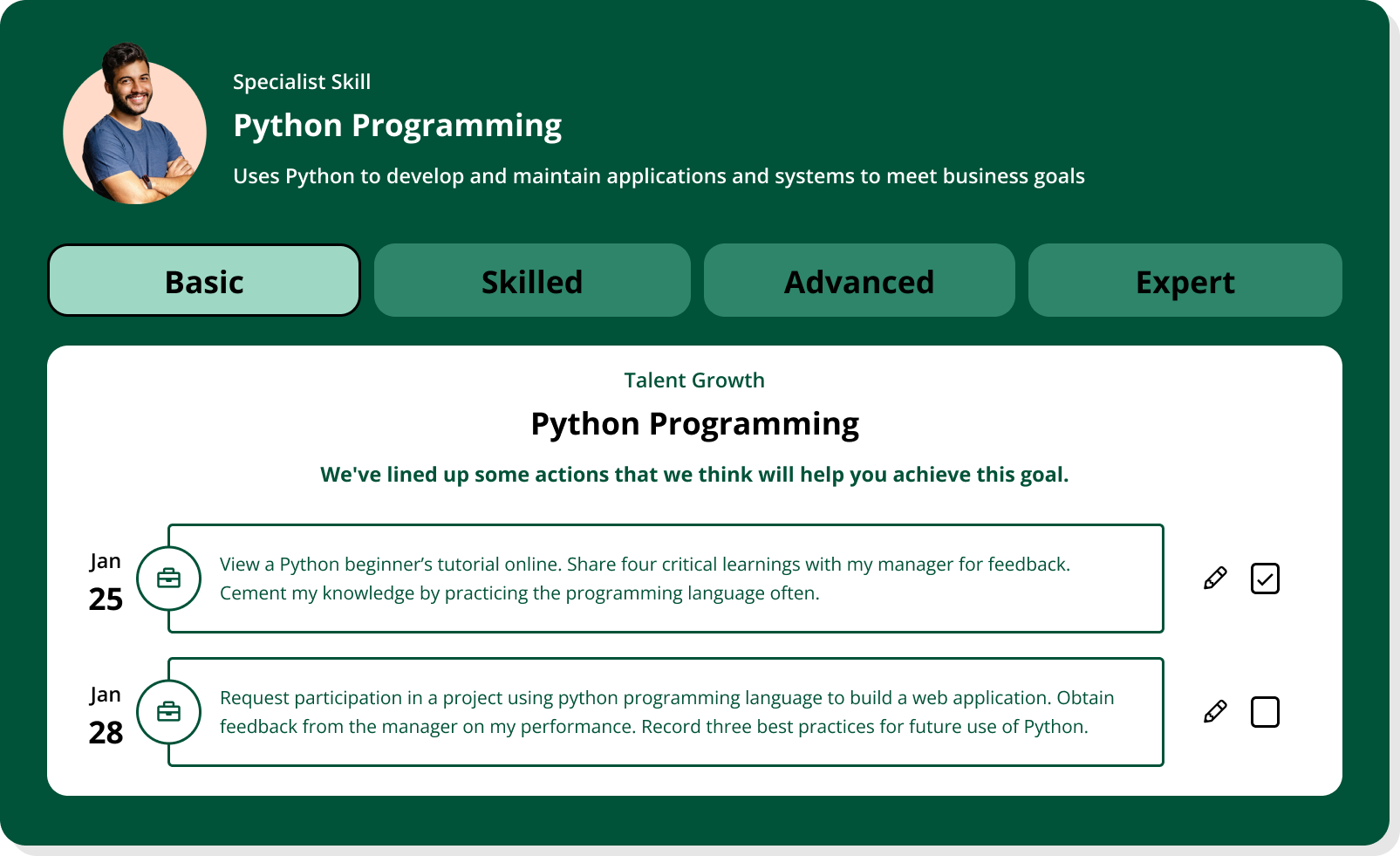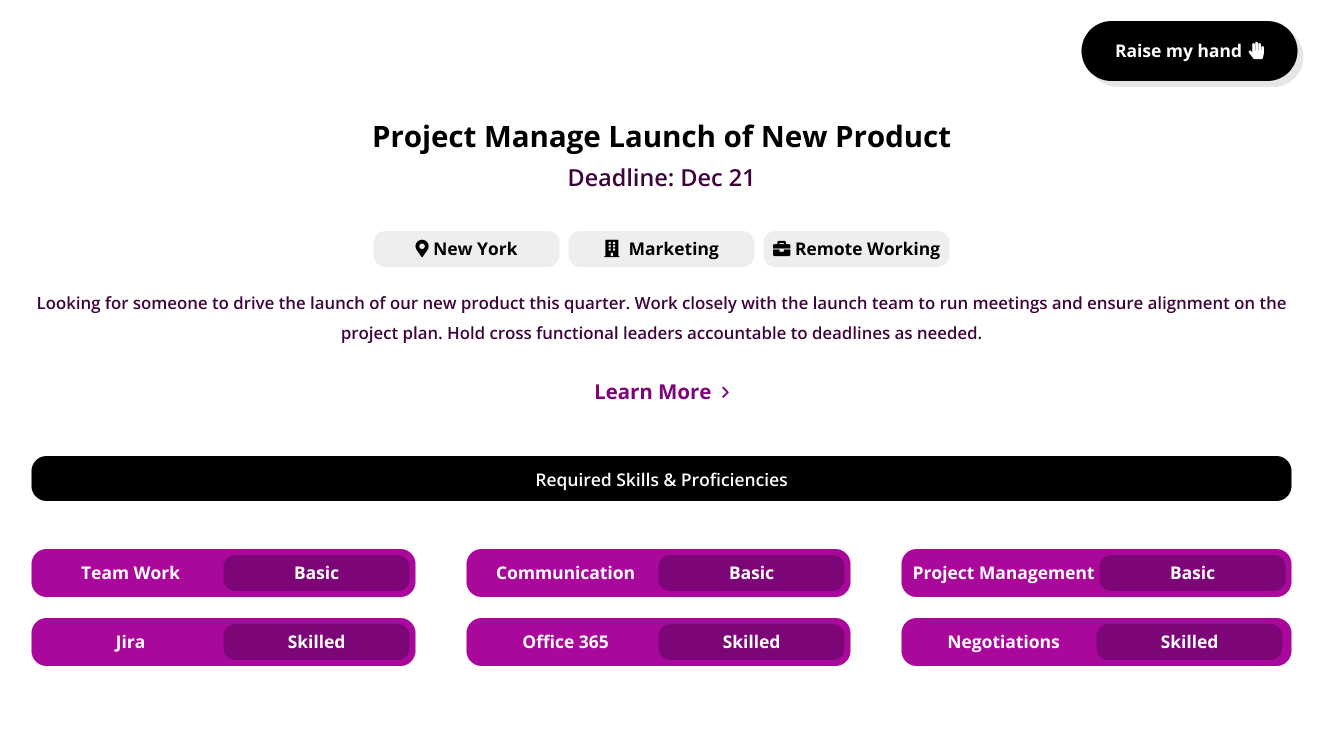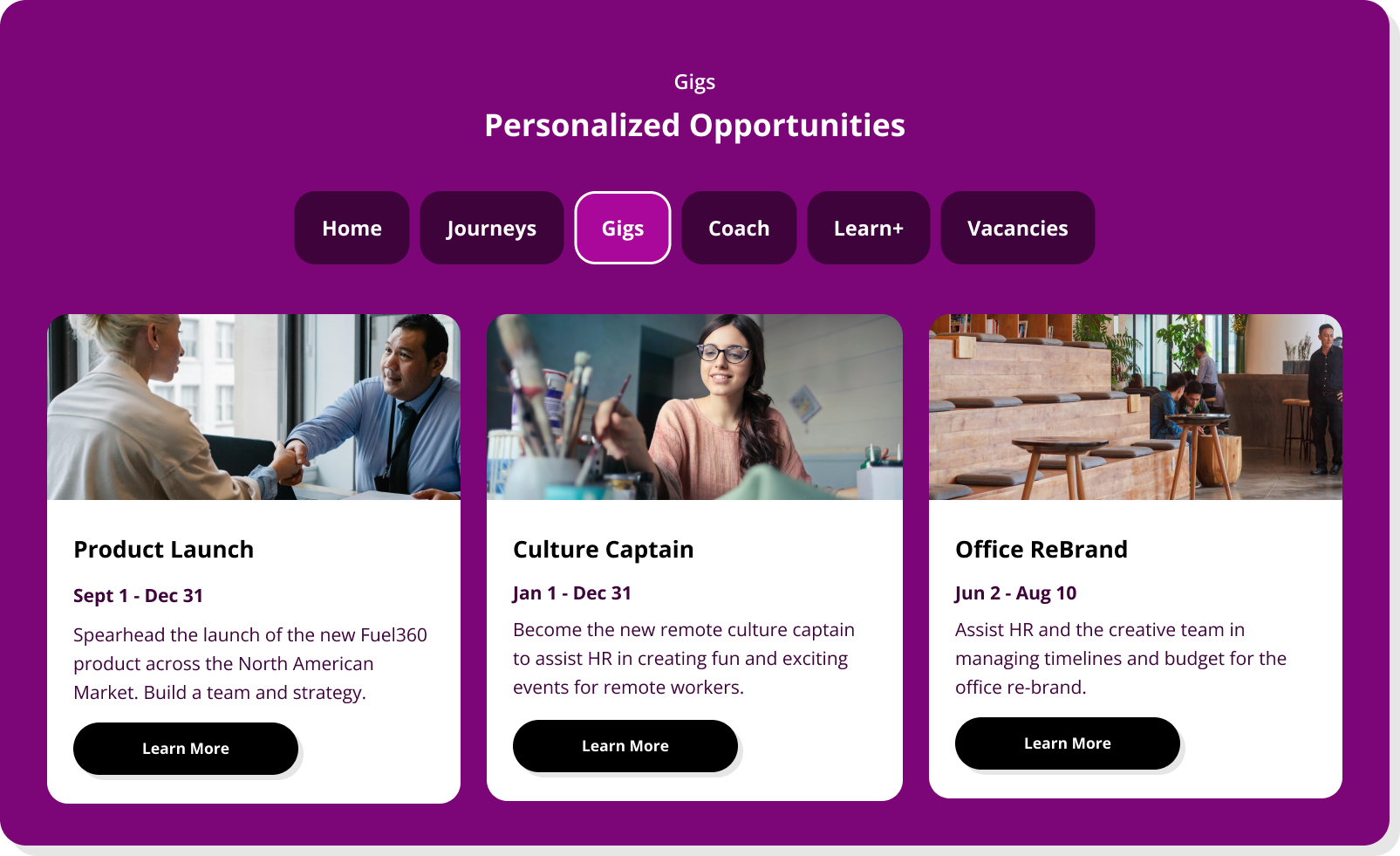HR teams are collecting more skills data than ever, but almost none of it is usable.
Skills are buried in performance reviews, resumes, job descriptions, and learning systems; each source uses different naming conventions; and each platform structures information differently. The result is a messy mix of spreadsheets, static taxonomies, outdated lists, and inconsistent tagging.
On paper, it looks like progress. In practice, it’s pure noise.
When skills data is fragmented, there’s no clear way to answer basic workforce questions like: What skills do we have? Where are our critical gaps? Who’s ready to move into a new role? Which areas should we prioritize for reskilling?
Without structure, you can’t run analytics. Without consistency, AI tools break. And without context, mobility and workforce planning turn into guesswork.
The core issue isn’t the volume of skills data—it’s the lack of a shared language and connected framework. Most HR teams build talent strategies on disconnected inputs, which makes it nearly impossible to act with confidence.
To fix this, organizations need to make sense of the data they’ve collected.
That’s where a skills ontology comes in. It serves as the missing layer that brings order, context, and meaning to your skills data.
In this article, we breakdown:
- What a skills ontology is and how it differs from a taxonomy or a skills library
- Why it matters now, especially as AI-driven tools and workforce agility become non-negotiable
- What to look for when evaluating solutions
What is skills ontology?
A skills ontology is a connected framework that gives structure and meaning to skills data. It maps the relationships between abiilities, roles, industries, and levels of mastery. This ontology understands how different skills relate to each other, how they apply in different contexts, and how they evolve over time. Skills data thus becomes usable across systems, functions, and use cases.
Here’s how it compares to other commonplace tools:
- A skills taxonomy is a static hierarchy. It shows categories and subcategories but doesn’t capture how skills interact.
- A skills library is a raw list. It provides no context, structure, or intelligence.
Meanwhile, a skills ontology adds depth. It understands that “data analysis” means different things in finance, marketing, or engineering departments. It connects related skills, recognizes variations in language, and allows AI to make informed recommendations.
In practical terms, a skills ontology lets your systems:
- Interpret skills data consistently, even when language varies
- Identify adjacent or inferred skills based on existing capabilities
- Align skills with specific roles and organizational structures
- Drive accurate mobility, reskilling, and planning decisions
It’s the infrastructure that makes skills data functional—and strategic.
How a skills ontology works in practice?
The value of a skills ontology becomes clear when you implement it across use cases, includingmapping roles, building mobility pathways, enabling AI, and supporting workforce planning with concrete data.
Let’s look at how that happens in practice.
1. It links skills to roles, levels, and business contexts
Most organizations manage job architecture and skills frameworks separately. One lives in HR, while the other lives in a spreadsheet, and neither updates in real time.
A skills ontology closes that gap by bridging roles, skills, levels of mastery, and industries. It understands not only which skills belong to a role but how those skills are weighted, how they transform based on seniority, and how they differ by context.
For example:
- A project manager in IT needs different technical and collaboration skills than one in marketing.
- A senior data analyst needs deeper skills than a junior analyst and also often requires adjacent capabilities like stakeholder management or data storytelling.
An ontology captures those nuances. Rather than treating roles as static or generic, it ties each position to a relevant, evolving cluster of skills based on real-world usage, industry trends, and role-specific expectations.
This means HR leaders can ask questions like:
- “What does this position require in our specific business context?”
- “Which emerging skills should we track for this job family?”
- “Where do we have overlap or redundancy in our structure?”
They then receive answers grounded in logic instead of legacy job descriptions.
2. It enables personalization at scale
When you connect employees to the ontology, everything changes. Career pathing, learning recommendations, internal mobility—they all become more relevant, personalized, and scalable.
Say you have an employee working as a front-end developer with experience using React and TypeScript. Traditional systems might stop there: The employee selects their job title and receives a generic list of training modules tied to “developer” roles.
A skills ontology goes further:
- It identifies related skills (e.g., Redux, accessibility, responsive design, GraphQL.)
- It understands what skills are common in adjacent roles, like UX engineering or full-stack development.
- It can recommend personalized learning based on what’s missing in the individual’s profile and what’s trending in future-fit roles.
- It can map logical next roles that align with their current skill set and the organization’s needs.
This personalization helps people see where they can go and what it takes to get there. In turn, that builds clarity for employees and strategic visibility for HR.
3. It powers AI across the talent life cycle
AI in HR only works if the inputs are structured and meaningful. A skills ontology is what gives your AI something to reason with.
Otherwise, recommendations are shallow; a system might suggest training based on keyword matches or outdated role tags. With an ontology, AI can reason across relationships:
- If someone has Python and data visualization, they’re likely capable of acquiring basic machine learning skills.
- If a business is building a new ESG function, the system can identify employees with relevant, adjacent skills—such as policy writing, data auditing, compliance—and suggest learning or “stretch” assignments.
Ontologies also improve matching for internal mobility, succession planning, and gig or project marketplaces. Instead of relying on title-based filters, systems can pinpoint people with the right capabilities, regardless of where they sit in the organizational chart.
This leads to more efficient talent allocation, stronger reskilling, and smarter workforce moves.
Why having a skills ontology is important for the whole business?
Skills strategy has historically been framed as an HR initiative. But the consequences of not having one are felt throughout the entire company.
When skills data is unstructured, business leaders can’t make informed decisions about workforce allocation, transformation readiness, or future capability gaps. That both slows down HR and impacts financial planning, innovation, and organizational agility.
Here’s how a skills ontology directly supports business-critical outcomes.
1. It enables workforce agility
Agility isn’t only about reacting quickly. It also entails knowing at any given moment what your organization is capable of and where you can deploy talent without starting from scratch.
A skills ontology makes that visibility possible. It provides a real-time, contextualized view of workforce capabilities not by role titles but by verified, transferable skills.
This allows leaders to:
- Mobilize talent across business units without waiting for external hires
- Identify employees who can pivot into growth areas
- React to shifting market conditions with internal capacity, not just headcount changes
In volatile conditions, that visibility can mean the difference between moving fast and stalling out.
2. It powers strategic workforce planning
Most workforce planning today still heavily relies on organizational charts and historical budgets. It rarely includes dynamic insights about skills availability, readiness, or risk.
A skills ontology changes that.
By mapping current capabilities and modeling future needs, it helps leaders:
- Forecast where skill shortages will emerge
- Quantify upskilling or hiring requirements based on real data
- Align talent strategies with business strategy so it doesn’t lag behind
This makes workforce planning proactive, not reactive. Additionally, it enables more accurate decisions about restructuring, investment, and transformation.
3. It builds resilience during uncertainty
Economic uncertainty quickly exposes talent gaps. Organizations that can’t move fast (or don’t know where to move people) lose time, market share, and high-potential talent.
A skills ontology helps prevent this by:
- Revealing adjacent or latent skills that could be redeployed
- Supporting internal gig marketplaces and redeployment strategies
- Minimizing reliance on external hiring when budgets are tight
Instead of reacting with layoffs or rushed hires, leaders can shift talent intelligently, based on a deep understanding of what their workforce can do—and what it could do with targeted investment.
4. It brings clarity to internal mobility and succession
Internal mobility functions only if people know where they can go and if the business knows who’s ready to move.
A skills ontology brings structure to both sides. It defines logical career paths, identifies readiness based on current skills, and shows which developmental actions could accelerate progress.
For succession planning, that translates to:
- Identifying successors not by title but by skill readiness
- Uncovering gaps that require targeted development
- Reducing risk in critical roles with objective talent data
This reduces reliance on subjective nominations or biased assessments. It also creates a more transparent, merit-based pathway for high-potential talent.
5. It optimizes learning investments
L&D teams are under pressure to prove ROI, but that’s almost impossible without knowing what skills are relevant to the business, where gaps exist, and whether learning closes those gaps.
A skills ontology connects these dots:
- Learning content is mapped to real business skills.
- Skill progress can be tracked at individual and organizational levels.
- Investments align with strategic capability building, rather than generic training.
This allows leaders to shift from spending on learning to investing in performance.
What to look for in a good skills ontology?
Here’s what to consider when evaluating a potential skills ontology solution for your business.
1. It must have dynamic updates
Skills don’t stand still. New tools, roles, and trends emerge constantly. If your ontology doesn’t evolve with the market, it’ll become a liability.
A strong ontology continuously ingests signals from job data, industry trends, and internal talent movements with no manual labor necessary. This ensures your workforce insights reflect today’s reality, not last quarter’s assumptions.
2. It must be context aware
Different skills have differing significance between roles or industries. A generic model flattens these differences, which leads to weak matches and irrelevant recommendations.
On the other hand, a robust ontology recognizes context. It understands that “strategic thinking” for a junior analyst looks vastly different for a VP. It accounts for how skills apply by role, level, and business domain so decisions are based on employees’ tangible outcomes instead of what their titles suggest.
3. It must align with your organization’s roles and structure
Off-the-shelf frameworks might look impressive, but if they don’t reflect your unique workforce, they’ll create more confusion than clarity.
Look for an ontology that can be tailored to your roles, job categories, and competencies, as well as adapt as they evolve. This alignment imperative to maximize the model’s functionality and see a noticeable ROI.
4. It must be interoperable with your existing systems
A skills ontology isn’t valuable in isolation. Its job is to power your entire talent ecosystem, from learning and mobility to planning and performance.
The best models integrate seamlessly with your HCM, LMS, ATS, and internal systems. Look for a solution that can sync data in real time, eliminate silos, and drive better results from your existing platforms.
Looking to build your skills ontology into a strategic advantage? Use Fuel50
Fuel50 is more than a skills ontology—it’s a talent intelligence engine that enables enterprise organizations to launch a skills-based strategy across the entire employee life cycle, from workforce planning and internal mobility to development and succession.
Where other solutions offer data in silos, Fuel50 makes connections. Our platform combines a live, expert-driven skills ontology with AI-powered career pathing, talent matching, and real-time workforce analytics to help businesses identify capability gaps, activate internal talent, and build strategic agility from the inside out.
Here’s what that looks like in practice.
A living skills framework, built for enterprise complexity
At Fuel50’s core is a skills ontology designed to evolve. Built by I/O psychology experts, it goes beyond static taxonomies, capturing thousands of unique skills, tools, and capabilities. Each is then structured with outcome-based definitions and proficiency levels.
Rather than offering generic skill labels, the ontology reflects how capabilities are employed differently across roles, industries, and seniority levels. It accounts for nuance, not just presence. It also includes practical developmental actions and guidance for each skill, making it useful for not only workforce planning but also day-to-day performance and growth conversations.
This framework is continually updated with new data from the market and client feedback to ensure your skills strategy keeps pace with industry shifts—without constant manual adjustments.
Strategic visibility through skills intelligence
Understanding your workforce starts with a clear overview. Fuel50’s platform gives HR and business leaders deep visibility into current capabilities, potential gaps, and emerging needs at an individual level, as well as across functions and geographies.
Our analytics layer then helps translate skills data into business decisions. Leaders can explore how skills are distributed across their organization, where overlaps or gaps exist, and which capabilities need to be developed to support future strategic moves. The system provides context and clarity that enable organizations to plan based on skill readiness, not assumptions or job title proxies.
This transparency helps shift workforce planning from reactive to proactive and gives organizations the insight they need to prioritize with confidence.
AI-powered talent matching and internal mobility
Internal mobility is only as strong as the systems that support it. Fuel50’s powerful talent marketplace connects people to opportunities based on what they can do and what they could grow into, rather than just what they do now.
The platform intelligently matches employees to roles, gigs, projects, and mentors according to skill alignment, growth potential, and interest. This unlocks pathways that often go unseen in traditional structures, making career progression feel tangible, personalized, and accessible.
At the same time, managers gain a broader view of the internal talent pool—not only who fits a role today but who could be ready with targeted development. That shift makes talent deployment faster, smarter, and less reliant on external sourcing.
Skills-based career development that drives engagement
Fuel50 supports skills-focused development by clearly showing employees how their current skills align with future roles and what they can do to close the gaps.
The platform fosters transparent career pathing, helping employees explore where they can go within the organization and what skills are in demand. Assessments and personalized recommendations guide individuals toward learning opportunities, stretch projects, and coaching relationships that support their progression.
This approach gives personnel agency over their growth and helps HR deliver scalable, skills-based development without needing to build complex programs from scratch.
Workforce planning grounded in reality
Fuel50 brings concrete data to the process of workforce planning. Its tools let leaders evaluate skill supply and demand, model future scenarios, and identify gaps before they become performance issues.
Skills gap analysis is no longer a one-time project. It’s a continuous input that affects business decisions, whether you’re expanding into a new market, restructuring a team, or deciding where to invest in reskilling. And because the platform links planning and execution, those insights are immediately actionable.
This is how organizations stay competitive without overspending on head counts or losing critical talent due to unclear paths forward.
Support for cultural and organizational transformation
Becoming a skills-based organization isn’t as simple as adopting a new tool. It requires a fundamental mindset shiftamong leadership, HR, and the broader employee body. Fuel50 supports this transformation with a platform that cultivates transparency and trust around career growth, and change management features that reinforce adoption.
From personalized dashboards to manager toolkits and communication prompts, the system helps reinforce new behaviors while keeping the experience intuitive for everyone involved.
The result is increased engagement, as well as cultural alignment with skills as a shared language for talent, strategy, and growth.







